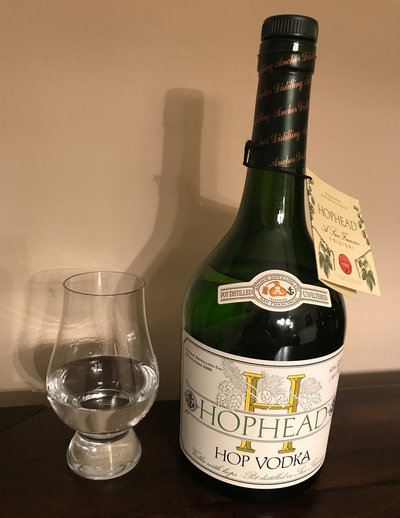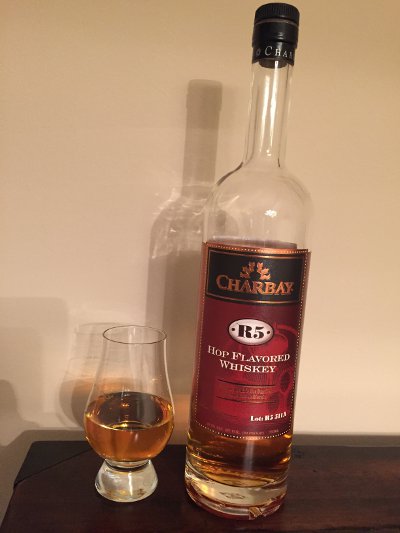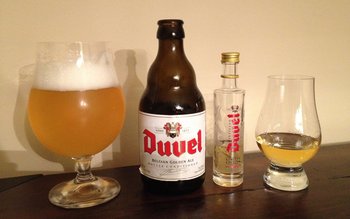The origins of the modern craft beer movement are usually traced back to 1965, when Frederick Louis "Fritz" Maytag III purchased Anchor Brewing Company, saving it from closure and keeping it strictly independent even during the dark days of consolidation and dominance of the big 3. A few decades later, in 1993, the company opened Anchor Distilling, a microdistillery in the same location as the brewery (surely not the first "craft" distillery, but probably ahead of the curve).
They're most famous for Old Potrero, a rye whiskey, but they also make gin and a few other oddities, like this relatively new offering, a vodka made with macerated hops. There have been various attempts to meld beer and spirits over the years, usually coming in the form of distilled commercial beer, like Charbay R5 (which is made from distilled Bear Republic Racer 5 IPA). Hopehead Vodka takes a slightly different approach. It uses hops which are macerated in neutral grain spirits before being distilled, apparently similar to the process used for Gin. Details are a little sparse, and while it's mentioned that they use 2 different hops, they don't mention which two. To my mind, the result is more gin-like than hoppy, but it feels like the mutant offspring of two different worlds:
Hophead Vodka - Pours clear, no color at all. Smell is... not what I expected. These aren't your typical hops, but they do display related notes, mostly floral with a little citrus, maybe some spice. Taste is a little less distinctive, again floral notes, a little bit of citrus in the finish, hints of spice, ethanol. Mouthfeel is crisp with a bit of a bite from the booze. It feels like gin, which isn't particularly surprising, but while there's a certain distinct flavor, it doesn't feel entirely like the hops we all know and love, even if it shares some DNA or something. Seems like a nice change of pace for the gin fan, might make an interesting coctail with tonic or something (which I should probably try). That being said, it never really cohered for me, even if I think it's a pretty interesting dram. Certainly worth a look if you can snag a sample, but not really worth a purchase.
Vodka Nerd Details: 90 proof, 45% ABV bottled (750 ml). Drank out of a glencairn glass.
Beer Nerd Musings: Obviously hops are a key component in beer, and to my mind, the various attempts to incorporate hop character in spirits or whiskey are fascinating, but wholly inferior to what can be done with beer. I would say that, of course, but something about the distilling process transforms the hops in ways that might be interesting, but also lossy. I'm no master homebrewer, but I've huffed enough fresh hops to know what unadulterated hops smell and taste like, and beer can really capture that in ways something like this vodka just isn't. I'm still curious what a sorta dry-hopping approach to vodka or whiskey would produce, but I'm not entirely sure that will work as well as it does with beer.
Well that was interesting, and I'll certainly continue to explore the various convergences between beer and liquor, even if they don't always work out. In the meantime, we'll return to non-alcohol land with tomorrow's review of... maple syrup? With a twist!



